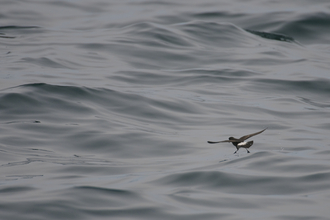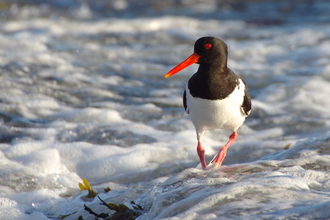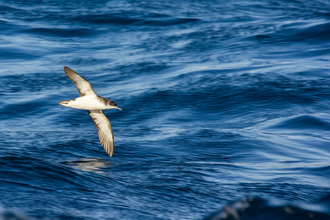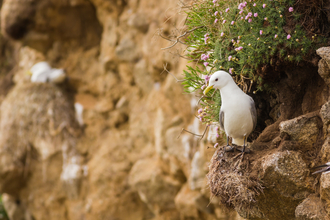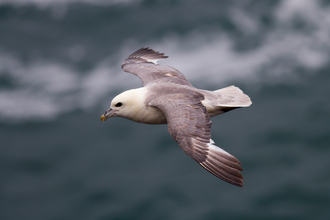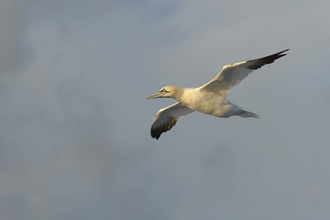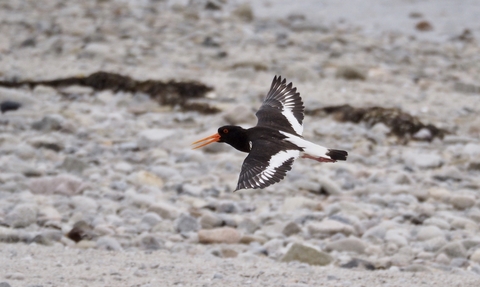
Oystercatcher
Birds of the land, coast and sky
The oystercatcher is a largish, stocky bird with monochrome feathers and an unmistakable long red bill. You will see them all around the rocks, islands and beaches of Scilly, often hearing their noisy cries before you spot them. They are ubiquitous of island life, being birds of the land, sea and shoreline. They are present all year round, but disturbance on beaches is impacting their breeding success.
The Latin name of the oystercatcher, Haematopus ostralegus, translates to blood-footed oyster gatherer, a reference to their red legs and diet of shellfish. Their bills are strong and flat, perfectly designed for breaking open the hard outer shells of cockles and muscles. In fact, young birds learn will feeding techniques from their parents. The length of their bills also makes them expert earthworm hunters. However, despite their name, the diet of oystercatchers in the UK rarely involves oysters, instead feeding on a variety of limpets, mussels, and gastropods.
These birds are highly recognisable in flight, showing a distinctive ‘V’ on their backs which stretches from their wings to their tail feathers. However, it is more likely you will hear their loud ‘peep-ing’ call before you see them, since these birds are extremely noisy. Even on land they are difficult to miss, with their bright red eyes and round bodies, waddling with determined steps as they hunt for their next meal.
Oystercatchers nest on bare, pebbled shores along the coast, laying between two to four eggs each year, with three being typical. Their eggs and chicks are cryptic, meaning their colours are highly camouflaged to avoid detection from predators. Though their nests are basic affairs, oystercatchers are monogamous and have been known to defend their nesting sites for many years—one pair were recorded to have defended the same site for 20 years!
On Scilly, oystercatchers are often seen wading in groups on the beaches, searching for food amongst piles of seaweed or along the limpet-encrusted rocks. Their large feet and long bills leave unmistakable trails in the sand. We are working to protect oystercatchers by identifying their nest sites and discouraging accidental disturbance to the birds during peak nesting season; we ask that people keep dogs and horses far away from nests when on beaches, as they can be easily disturbed, leading to abandoning.
Find out more
The Isles of Scilly are famed for their amazing coast life. Find out more about oystercatchers nationally and other seabirds you can find on Scilly...

